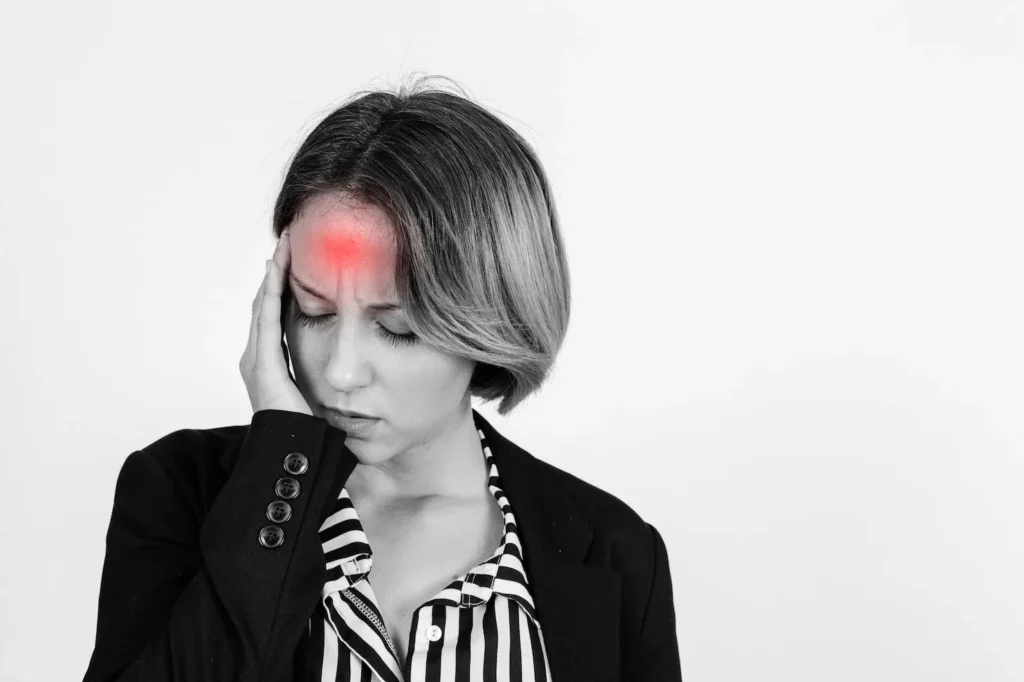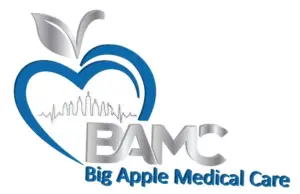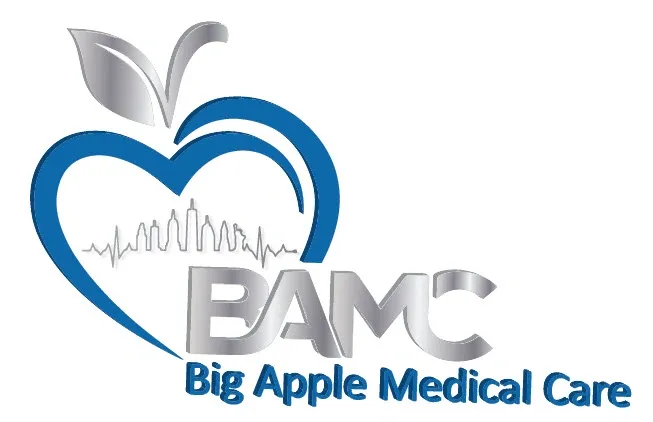How to Relieve Pain: 5 Simple Acute Pain Management Techniques for Immediate Relief

Pain can strike suddenly, disrupting daily life and making even simple tasks challenging. Whether it’s from an injury, surgery, or unexpected health issue, acute pain demands immediate attention and effective management strategies.
Implementing simple pain management techniques can provide significant relief without requiring complex medical interventions or medications. These approaches can be particularly valuable for those seeking immediate comfort while waiting for medical care or as complementary methods alongside prescribed treatments.
Many patients at Big Apple Medical Care have found success combining multiple pain relief strategies for more comprehensive results. Their specialists recommend personalizing these techniques based on the type and location of pain, as well as individual health conditions, to achieve optimal acute pain management outcomes.
Understanding Acute Pain and Its Causes
Acute pain serves as the body’s warning system, alerting us to potential injury or illness that requires attention. It typically has a clear cause and follows a predictable healing timeline, unlike its persistent counterpart.
Difference Between Acute and Chronic Pain
Acute pain is temporary, usually lasting less than three months and directly linked to specific tissue damage. It resolves once the underlying injury heals.
Chronic pain persists beyond normal healing time, often continuing for more than three months. Unlike acute pain, chronic pain may remain after injuries heal and can develop into a condition itself.
The nervous system processes these pain types differently. Acute pain involves normal pain signaling, while chronic pain may reflect changes in how nerves transmit signals over time.
Pain intensity doesn’t necessarily indicate whether pain is acute or chronic – severe pain can be either type depending on its duration and cause.
Common Causes of Acute Pain
Injuries represent the most frequent acute pain triggers. These include sprains, fractures, burns, cuts, and muscle strains that create immediate tissue damage.
Common injury-related acute pain sources:
- Sports injuries affecting muscles and joints
- Work-related accidents
- Vehicle collisions
- Falls or impacts
- Burns and lacerations
Medical procedures often cause temporary acute pain. Surgical incisions, dental work, and certain diagnostic tests can trigger significant discomfort that diminishes during recovery.
Infections generate acute pain through inflammation and tissue irritation. Examples include ear infections, strep throat, appendicitis, and urinary tract infections.
Internal issues like kidney stones, gallstones, and appendicitis create intense acute pain requiring prompt medical attention.
How Acute Pain Affects the Body
Pain signals travel along specialized nerve pathways. When tissue damage occurs, nociceptors (pain receptors) activate and send messages through nerve fibers to the spinal cord and brain.
The brain processes these signals in multiple regions, including the thalamus and cerebral cortex, creating the conscious experience of pain. This system helps protect the body by encouraging behaviors that prevent further damage.
Physical responses to acute pain include:
- Increased heart rate and blood pressure
- Muscle tension and guarding
- Rapid breathing
- Stress hormone release
These physiological changes prepare the body for “fight or flight” but can themselves cause additional discomfort. Muscles and joints often tense reflexively around painful areas, sometimes creating secondary pain.
Acute pain affects mental state as well, triggering anxiety, irritability, and concentration difficulties. These emotional responses can sometimes intensify the perception of pain.
5 Simple Acute Pain Management Techniques
Managing acute pain effectively involves multiple approaches that can provide relief without requiring prescription medications. These techniques can be used individually or combined for better results, depending on the severity and cause of your pain.
Applying Cold and Heat Therapy
Cold therapy works by reducing blood flow to the affected area, which helps decrease inflammation and numb pain. Apply an ice pack wrapped in a thin cloth to the painful area for 15-20 minutes at a time. This technique is particularly effective for acute injuries, sprains, and strains within the first 48 hours.
Heat therapy, in contrast, increases blood flow and relaxes tense muscles. Use a heating pad, warm towel, or take a warm bath for 15-20 minutes. This approach works best for muscle stiffness, ongoing joint pain, and tension.
Alternating between cold and heat treatments can provide enhanced relief for certain conditions. Always protect your skin from extreme temperatures to prevent burns or frostbite.
Over-the-Counter Pain Relievers
Nonsteroidal anti-inflammatory drugs (NSAIDs) like ibuprofen and naproxen reduce both pain and inflammation. They work by blocking specific chemicals in your body that cause inflammation.
Acetaminophen effectively relieves pain but doesn’t reduce inflammation. It blocks pain signals within the brain itself and is generally easier on the stomach than NSAIDs.
Always follow dosage instructions carefully and be aware of potential side effects. NSAIDs may cause stomach irritation or bleeding, while acetaminophen can affect liver function if taken in excess or with alcohol.
Topical analgesics containing ingredients like menthol or lidocaine can provide localized relief without systemic effects. These are applied directly to the painful area.
Physical Therapy Exercises
Gentle stretching helps relieve tension and improves flexibility in painful areas. Start with simple movements and gradually increase intensity as pain decreases.
Strength exercises build supporting muscles around painful joints or areas, providing better stability and reducing strain. These should be introduced gradually and modified based on pain levels.
Low-impact activities like swimming or walking improve circulation without adding stress to painful areas. These activities release endorphins, the body’s natural pain relievers.
Proper posture and body mechanics are essential components of physical therapy for pain. Learning to sit, stand, and move correctly can prevent pain from worsening.
Relaxation and Mind-Body Approaches
Mind-body techniques can significantly decrease pain perception by interrupting pain signals and promoting relaxation. These approaches activate the body’s natural pain relief mechanisms and give individuals effective tools for managing acute pain episodes.
Breathing and Relaxation Techniques
Deep breathing is one of the simplest yet most powerful relaxation techniques for pain management. When practiced correctly, controlled breathing sends signals to the brain to calm down and release tension that often accompanies pain.
To practice deep breathing, sit or lie in a comfortable position. Place one hand on your chest and another on your abdomen. Inhale slowly through your nose for a count of four, feeling your abdomen expand. Hold briefly, then exhale through your mouth for a count of six.
Progressive muscle relaxation works by systematically tensing and then releasing different muscle groups. This technique helps identify areas of hidden tension that may contribute to pain.
Body scanning involves mentally focusing on each part of your body sequentially, noting sensations without judgment. This practice increases body awareness and helps detect early signs of tension before pain intensifies.
Guided Imagery and Mindfulness
Guided imagery uses focused concentration to create mental images that can alter pain perception. When experiencing acute pain, visualizing a peaceful scene can redirect attention away from discomfort.
Try imagining yourself in a serene location—perhaps a beach with gentle waves or a quiet forest. Focus on the sensory details: sounds, smells, and physical sensations of this imaginary place. This mental redirection can reduce pain intensity by 30-50% in some individuals.
Mindfulness meditation involves paying attention to the present moment without judgment. Rather than fighting against pain, mindfulness encourages observation of sensations with curiosity.
Start with brief 3-5 minute sessions, gradually increasing duration as comfort develops. Regular practice strengthens neural pathways that improve pain tolerance and emotional regulation.
Research shows these techniques not only help with immediate pain control but also improve overall quality of life by reducing stress hormones that can amplify pain signals.
When to Seek Professional Pain Management
While self-management techniques can provide relief for many types of acute pain, certain situations require professional medical intervention. Knowing when to seek help and understanding the available specialized care options can significantly improve outcomes and prevent pain from becoming chronic.
Recognizing Signs of Severe or Persistent Pain
Pain that persists beyond the expected healing time warrants medical attention. Seek professional help if pain is accompanied by fever, unexplained weight loss, or loss of function in the affected area. Severe pain that awakens you from sleep or doesn’t respond to over-the-counter medications should not be ignored.
Pain that increases in intensity rather than gradually improving is another warning sign. Numbness, tingling, or weakness accompanying pain may indicate nerve involvement requiring specialized assessment.
Any pain following trauma or injury that seems disproportionate to the event should be evaluated promptly. If pain restricts daily activities or work responsibilities for more than a few days, professional guidance becomes essential.
Consulting a Pain Specialist or Clinic
Pain medicine specialists offer comprehensive evaluations beyond what general practitioners can provide. These experts at facilities like Big Apple Medical Care have advanced training in diagnosing complex pain conditions and creating tailored treatment plans.
Pain clinics utilize multidisciplinary approaches, bringing together various specialists under one roof. This collaborative environment allows for more effective diagnosis and treatment planning.
When consulting a pain specialist, bring detailed records of pain patterns, triggers, and previous treatments. Many clinics offer both interventional procedures and medication management options depending on individual needs.
Initial consultations typically involve thorough medical history reviews and physical examinations. Advanced diagnostic testing may be recommended to pinpoint precise pain sources before treatment begins.
Combination Treatments and Multimodal Care
Modern pain management programs emphasize multimodal approaches rather than relying on single treatments. These comprehensive strategies might combine physical therapy, medications, psychological support, and minimally invasive procedures.
Medicines such as morphine and other opioids are carefully prescribed within structured pain management programs. Non-opioid medications, nerve blocks, and regenerative medicine techniques may provide alternatives with fewer side effects.
Behavioral therapies address psychological factors that influence pain perception. Techniques like cognitive behavioral therapy help patients develop effective coping strategies for pain management.
Advice from your doctor might include lifestyle modifications alongside medical treatments. Complementary approaches such as acupuncture, massage therapy, and meditation often supplement conventional medical interventions in comprehensive pain management plans.
Frequently Asked Questions
Pain management involves various techniques that can be tailored to individual needs and circumstances. Many people seek alternatives to medication for both acute and chronic pain relief.
What are the most effective non-medicinal methods to reduce pain?
Cold/heat therapy, gentle movement, deep breathing exercises, and professional physical therapy have shown significant efficacy for non-medicinal pain relief.
What methods can one use to alleviate pain through mental techniques?
Mindfulness meditation, guided imagery, cognitive behavioral therapy, and progressive muscle relaxation can effectively reduce pain perception by altering brain responses.
What is considered the most powerful natural remedy for pain relief?
Turmeric (curcumin) is widely regarded as one of the most potent natural anti-inflammatory agents, with clinical evidence supporting its pain-relieving properties.
What are the latest advancements in treating chronic pain?
Recent innovations include targeted nerve stimulation devices, advanced biofeedback technology, and personalized pain management programs that combine multiple modalities.
What steps should be taken when managing acute pain effectively?
Immediate RICE protocol (Rest, Ice, Compression, Elevation), appropriate short-term medication if necessary, and early consultation with specialists like those at Big Apple Medical Care.
What coping strategies are essential for individuals suffering from chronic pain?
Developing a consistent sleep routine, building a strong support network, learning pacing techniques, and working with specialized pain management professionals are crucial coping strategies.






